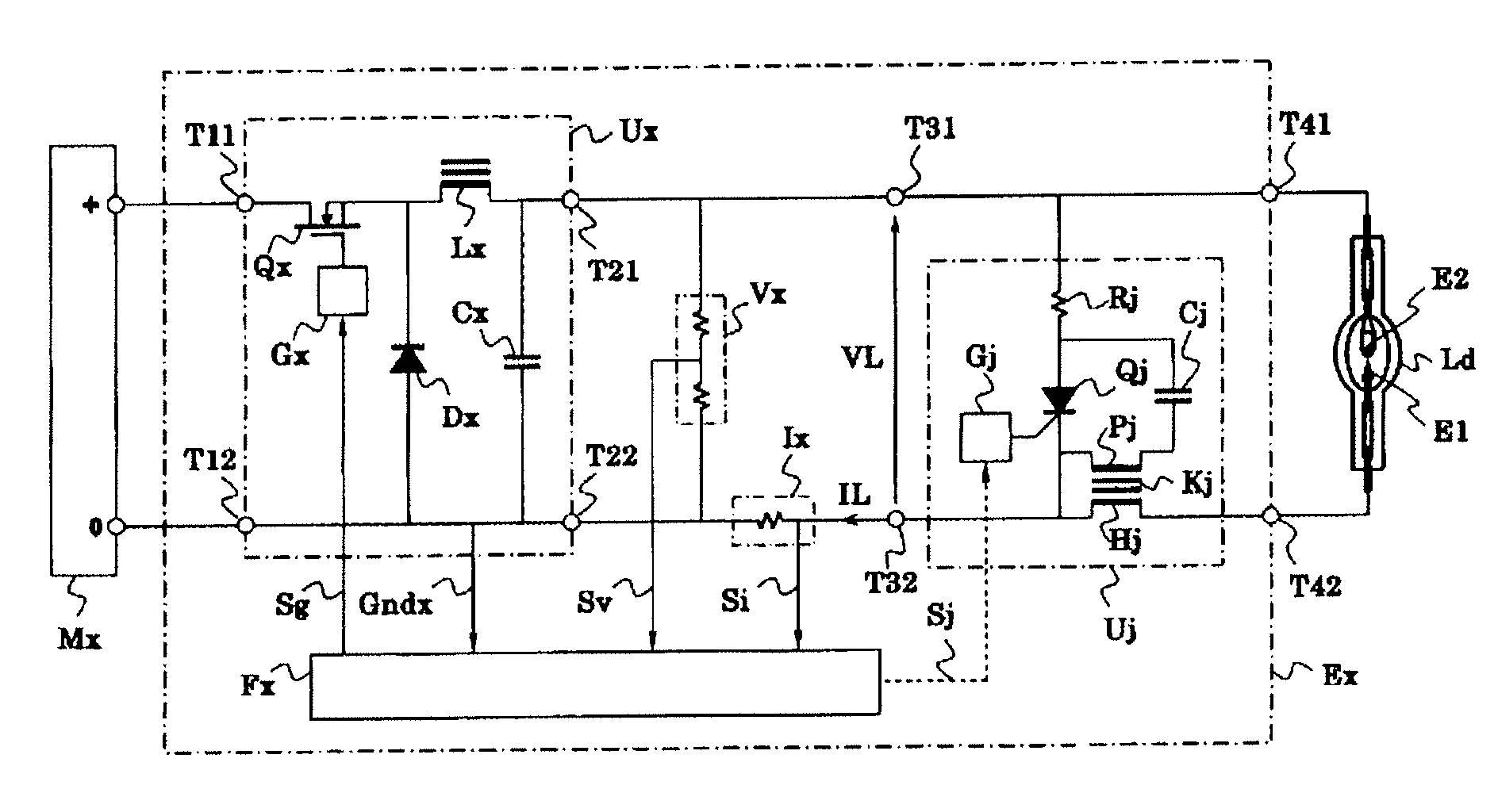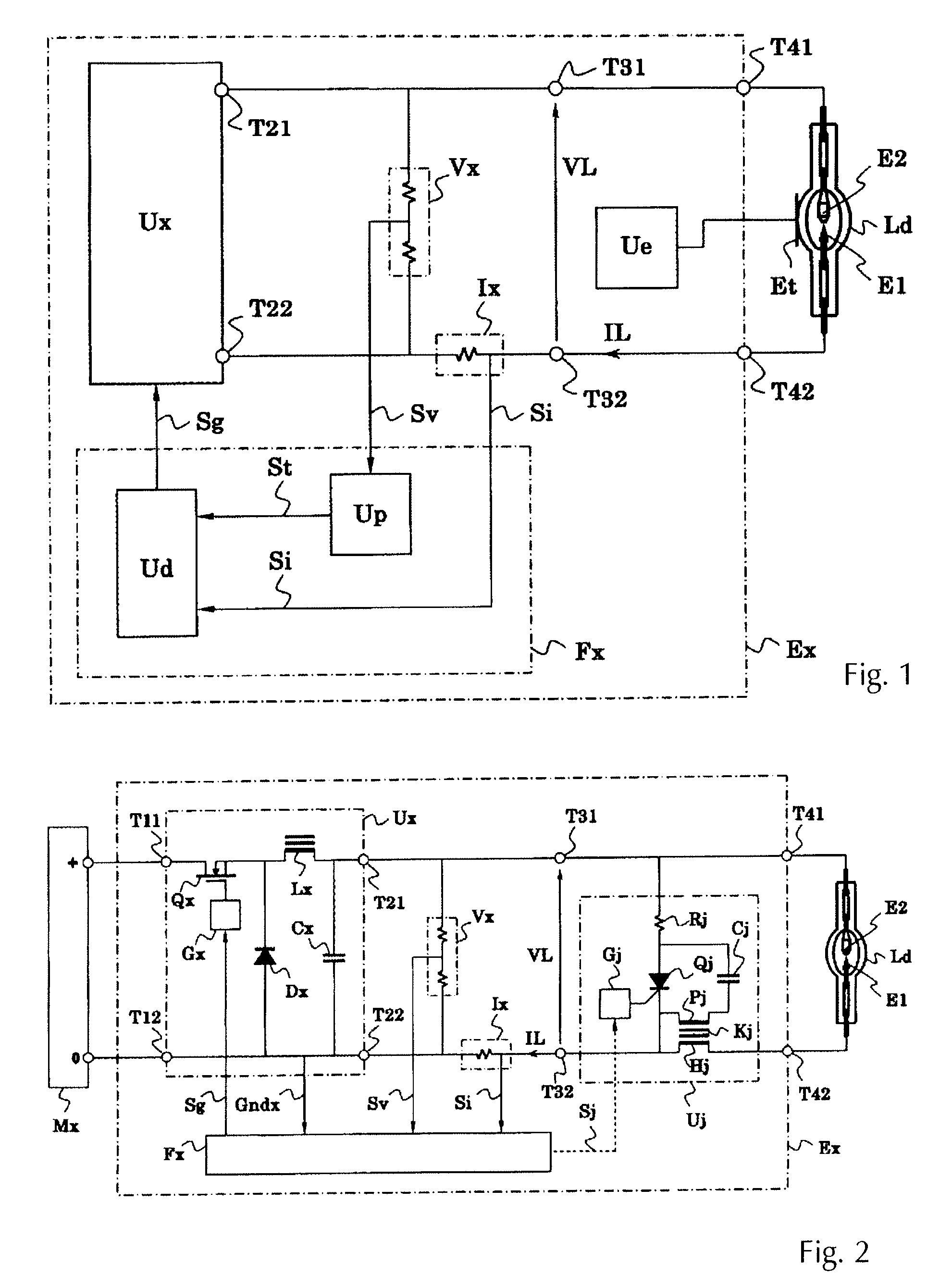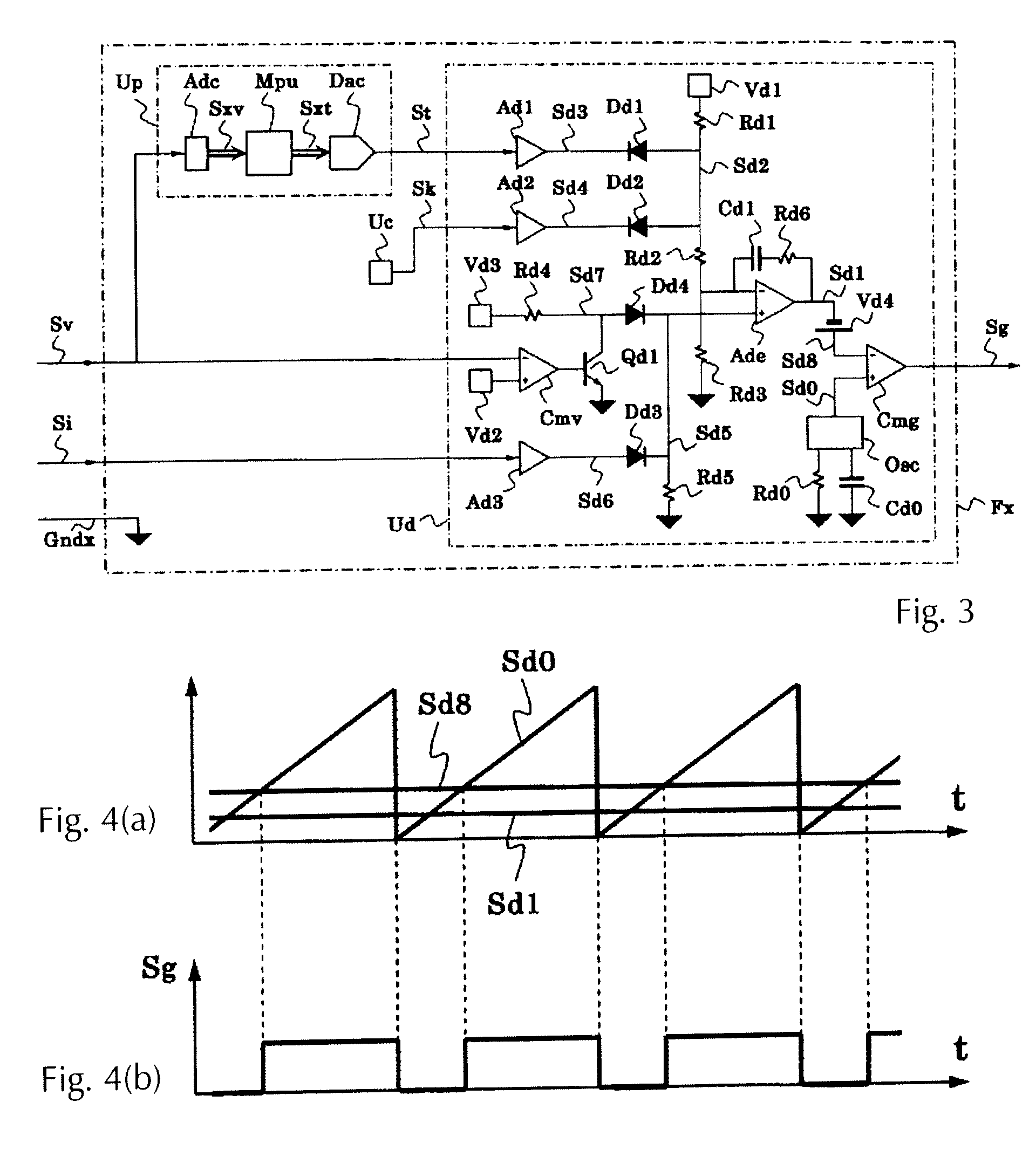Discharge lamp ignition device and projector
a technology of ignition device and discharge lamp, which is applied in the direction of electric variable regulation, process and machine control, instruments, etc., can solve the problems of complicating the control of space modulation element in the projector equipment, and reducing the effective efficiency of light beam, so as to reduce the effect of excessive phenomena, smooth out the changes, and simplify the process
- Summary
- Abstract
- Description
- Claims
- Application Information
AI Technical Summary
Benefits of technology
Problems solved by technology
Method used
Image
Examples
Embodiment Construction
[0052]A first of embodiment of a discharge lamp ignition device in accordance with the invention is shown in FIG. 1 as having a discharge lamp Ld that is connected to a starter Ue for initiating discharge. This figure shows the case of use of the external trigger method, in which high voltage is impressed on an auxiliary electrode Et outside the sealed case of the discharge lamp Ld. The substance of this invention is, however, unrelated to the triggering method used or the location of the means for triggering ignition.
[0053]A feeder circuit Ux comprises such things as switching circuits of a step-down chopper or step-up chopper type, is connected so as to output a voltage and current that matches the condition or lighting sequence of the discharge lamp Ld and feed it to the discharge lamp Ld through the main discharge electrodes E1, E2 of the discharge lamp Ld. Now, the voltage that the feeder circuit Ux puts out as the no-load release voltage is typically from 200 to 300 V; the lam...
PUM
 Login to View More
Login to View More Abstract
Description
Claims
Application Information
 Login to View More
Login to View More - R&D
- Intellectual Property
- Life Sciences
- Materials
- Tech Scout
- Unparalleled Data Quality
- Higher Quality Content
- 60% Fewer Hallucinations
Browse by: Latest US Patents, China's latest patents, Technical Efficacy Thesaurus, Application Domain, Technology Topic, Popular Technical Reports.
© 2025 PatSnap. All rights reserved.Legal|Privacy policy|Modern Slavery Act Transparency Statement|Sitemap|About US| Contact US: help@patsnap.com



